
Many online business owners are laser-focused on improving their business’ visibility online to amass as many new customers as possible. With the plethora of knowledge available covering creating effective PPC ads and keeping your store SEO-savvy, this is a great move for brands that are looking to grow. However, attracting new customers should not come at the cost of ignoring (or simply forgetting about) those who have purchased from you in the past.
On average, it costs five times more to acquire a new customer than it does to retain an existing customer. For this reason, wise business owners balance their marketing strategy to cover both audiences so that they can maximize their ROI. One relatively inexpensive way to regain lapsed customers is to include re-engagement emails in your marketing playbook.
What is a Re-engagement Email?
A re-engagement email—or win-back email—is sent to customers a certain amount of time after their last purchase, opened email, or other reference point to try to convince them to resume interactions with your business. Marketers are not fully aligned on the best time to send this type of email—an appropriate cadence will likely depend on your business’s industry and how often you interact with customers already—but the general consensus falls somewhere between 16-60 days after the most recent reference point. While there will always be leads that die out over time, research shows that 45% of those who receive re-engagement emails will read successive emails.
Different Approaches to Re-engagement Emails
There are several techniques you can use when crafting the overall tone and copy for your re-engagement emails. Here are a few commonly-used approaches:
1. Simple Question Re-engagement Email
An email that asks a simple question is sometimes all you need to re-engage customers—plus, with decreased attention spans becoming the norm, shorter might be better. Inquire whether the customer would like to continue receiving emails from your business while expressing that you would love for them to stick around. Avoid asking directly if they would like to STOP receiving messages—from a psychological perspective, it is more rewarding to suggest a positive action rather than a negative one.
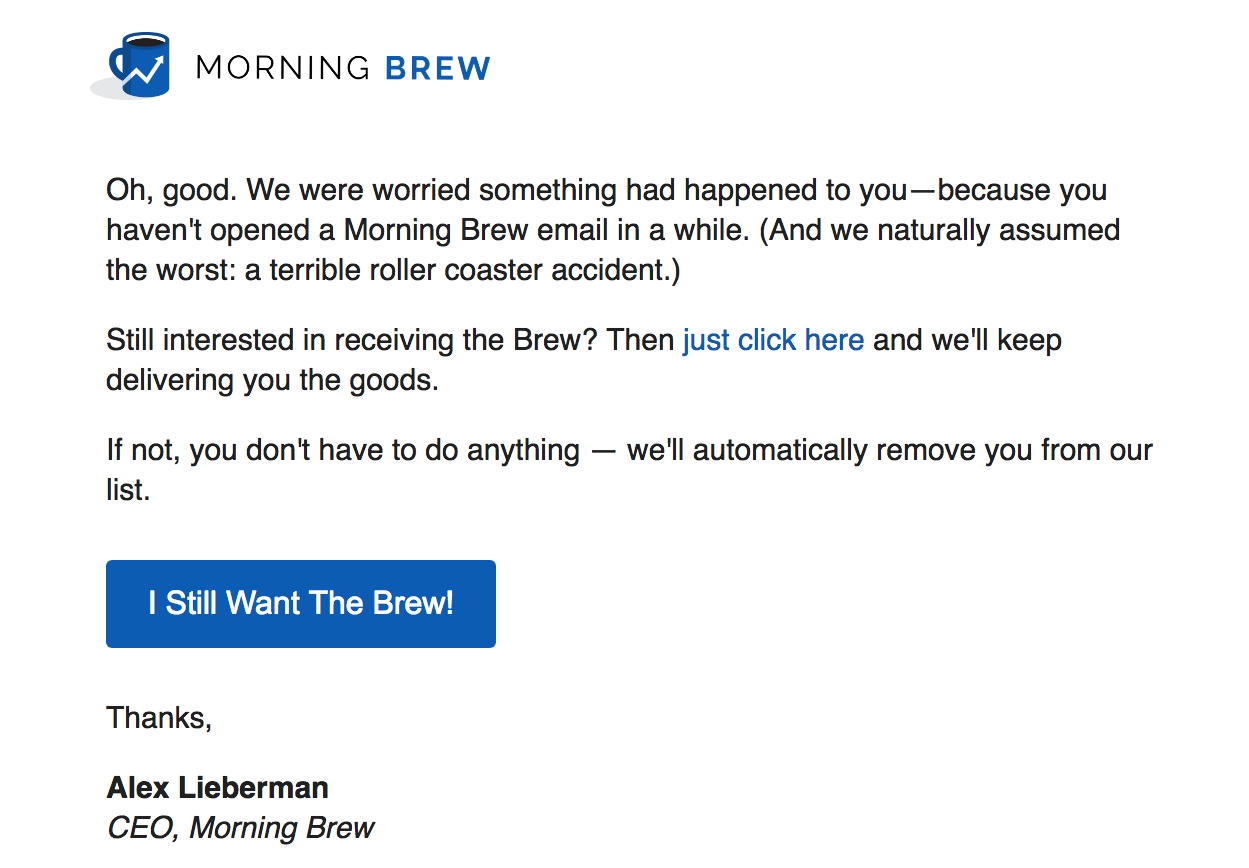
Source: Morning Brew
2. What’s New Re-engagement Email
A “what’s new” or “what you missed” email fills customers in on any business updates or new product arrivals that they may have missed by not engaging with your business up to this point. The goal is to re-inspire and excite readers, reminding them why they were interested in your business in the first place while also demonstrating how it has grown and expanded. If you can, focus on changes you have made that could address the reason(s) they stopped engaging with your brand in the first place.
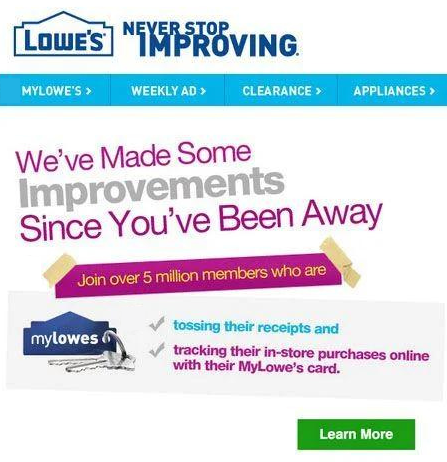
Source: Lowe’s
3. Incentivized Re-engagement Email
Giving customers a reason to re-engage that benefits them is often a very persuasive way to drive additional purchases. By pairing such an incentive with a message that you would love to have them back, you demonstrate that you greatly value their business. Consider giving lapsed customers a special discount, free rewards points, or even a small credit toward their next order so that they will feel compelled to make a new purchase.
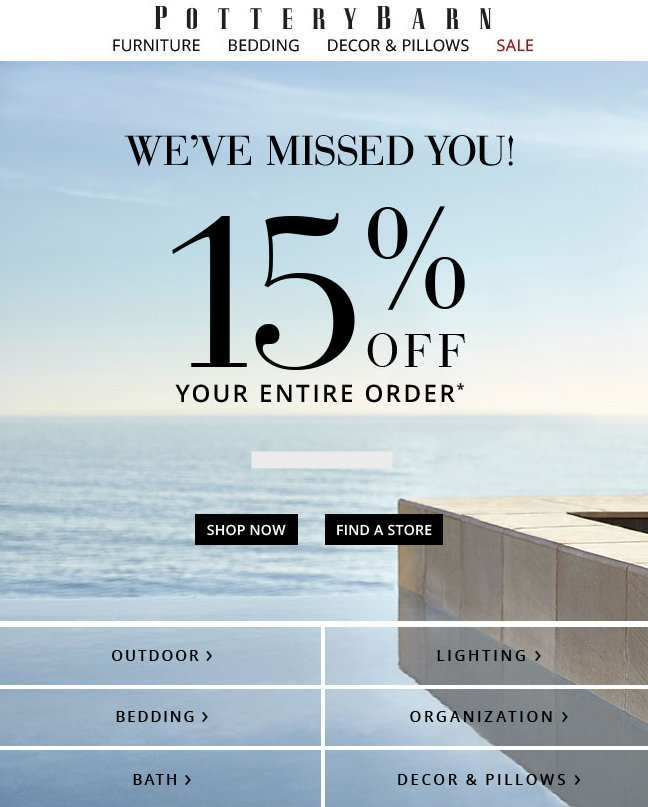
Source: Pottery Barn
4. Emotional Appeal Re-engagement Email
Sometimes simply appealing to your readers’ emotions can be the best way to get your point across. Many marketers use humor or sadness (typically in a humorous way) to catch readers’ attention and re-establish an emotional connection with the brand. “Break-up” emails, as well as images of sad animals, are fairly common—you’ve likely gotten one or two of them in your own inbox.
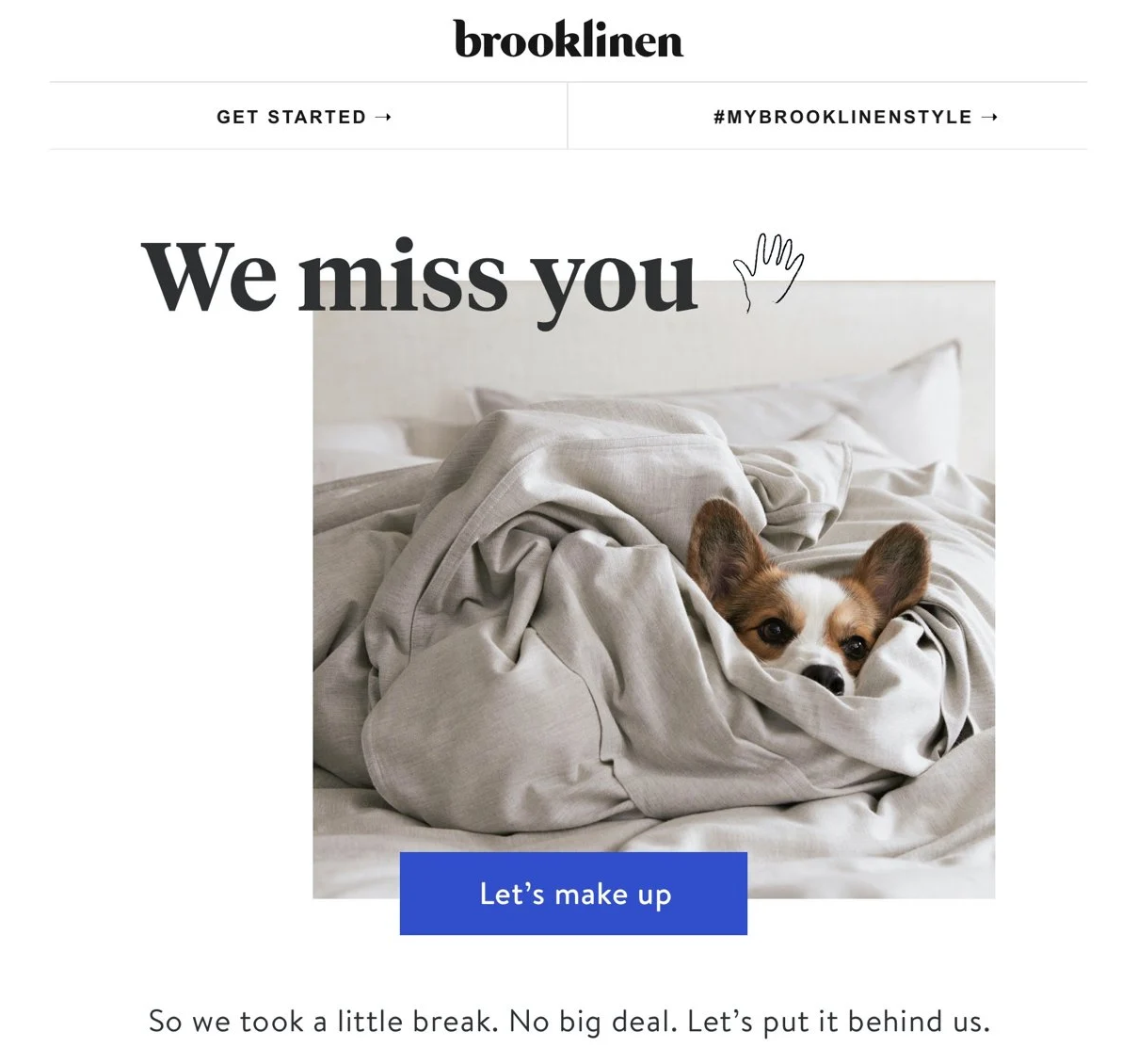
Source: Brooklinen
5. Feedback Re-engagement Email
You won’t always be able to pinpoint what caused customer drop-off from your data alone. In cases like these, a feedback email is a great way to gain valuable information and show customers that you care about improving their experience. While generally used in feedback and review campaigns, feedback emails can also be helpful as a last resort in your re-engagement campaign to learn how to get customers back on board.
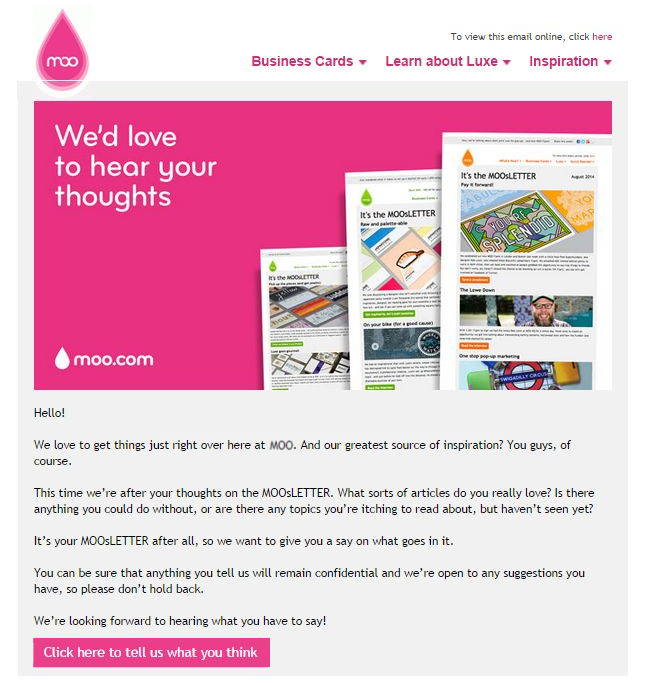
Source: MOO
6. Urgent Action Re-engagement Email
Creating a sense of urgency is another proven way to elicit action from your customers. This can be achieved through an incentivized offer (mentioned above) with a close expiration date; however, there are other ways you can spur your customers to act now. Inform them that their account will be deleted soon or that their email address will be removed from their list unless they act now—and make sure to convey why they shouldn’t want to be removed from your database.
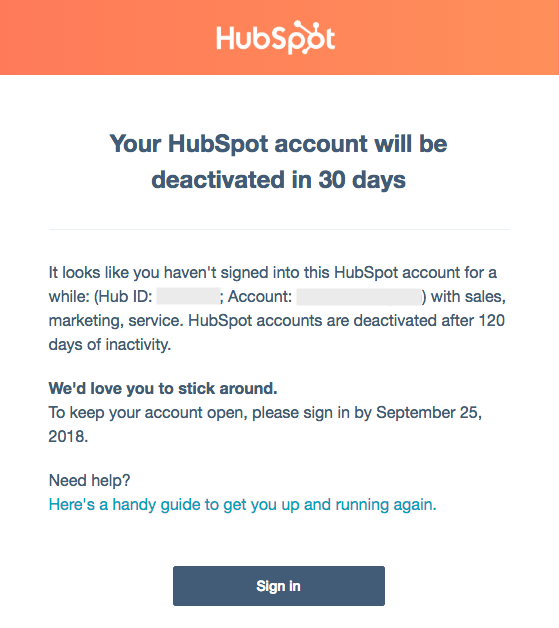
Source: HubSpot
7. Creative Re-engagement Email
While those listed above are relatively common, there are many other regularly-employed approaches to re-engagement emails. But don’t be afraid to try something new or unusual! You know your customers better than any marketer, so think about what might appeal to them specifically and convince them to re-engage with your business.
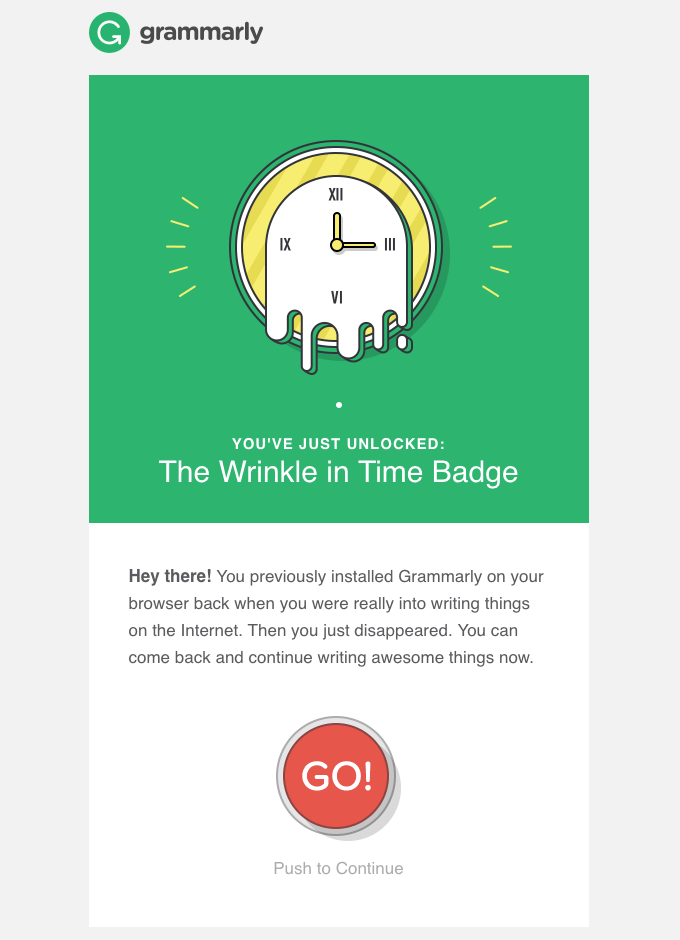
Source: Grammarly
Quick Tips for Creating a Winning Re-engagement Email
Creating a re-engagement email that has a chance of inspiring lapsed customers requires a meaningful and thought-out strategy. Here are a few quick steps you can take to ensure that your re-engagement campaign reaches its full potential:
- Consider drop-off reasons: Have you had complaints about your order process? Do your products simply not need to be replenished often? Do you send too many emails in general? Is your product offering more of a one-time need? Put yourself in the customer’s shoes and consider what might keep them from interacting further, and use that to inform the rest of your strategy.
- Show that you value your contacts: Make sure that the overall message of the email conveys that you truly value your customers—that you appreciate their continued patronage and want to make their experience with your business great. Although it may be the overarching goal of your re-engagement emails, don’t let your customers feel like you just want to make another buck off them.
- Personalize your copy: This is a great way to show that you value your contacts. Address the email recipient by name, and try to add references to items or categories they have viewed or purchased previously to show that you are paying attention. The more tailored your communications are to the individual customer, the more they will feel like you care about them individually.
- Provide an opt-out option: Some customers simply do not like receiving emails. Others, unfortunately, have already made up their mind not to purchase from your business in the future and won’t change it. To avoid incurring unnecessary friction, always include an “unsubscribe” option at the end of your email to generate goodwill (and to comply with email marketing laws).
- Send a sequence of emails: With the prevalence of emails these days, you always run the risk of any emails you send getting lost in a full or infrequently monitored inbox. Consider creating a drip series rather than a single re-engagement email that is triggered by inaction. By adding in additional touchpoints, you can counter the possibility of your emails not even being seen.
In Conclusion
Winning back lapsed customers can be difficult—and you shouldn’t expect them to come back in droves. However, by building out a thoughtful re-engagement email strategy, you can save time and money prompting new purchases while also establishing a more loyal and passionate customer base.











